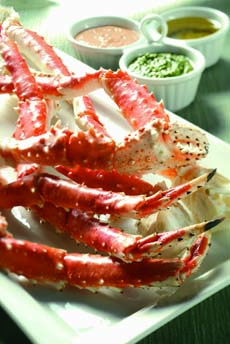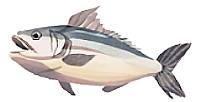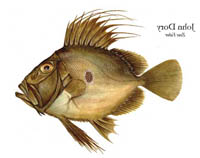JOHN DORY
KING CRAB
Only male king crabs, which are much larger than females, are fished. Three species of king crab are fished commercially:
King crab quality can vary widely, depending upon the time of the year it is caught. Alaska red king crab, which is mostly fished in the fall, generally has excellent “meat fill” (the amount of meat in the shell), often 90% or higher. Meat fill from brown king crab, on the other hand, which is fished in deeper waters year-round, can be less than 80%. In Russia, where there are two seasons, the meat fill can vary widely. Russian crab from the winter fishery (January through April) is normally quite good. The meat fill of Russian king crab caught in the late summer and early fall fishery can be inconsistent.
|
|
A gastropod with a distinctive pointed, Chinese hat-shaped shell, limpets can be found, like barnacles, clinging to rocks. Rarely found outside of coastal areas, and even there only in specialty markets, the meat can be eaten raw, or lightly sautéed. Like most seafood, it must be cooked lightly to prevent toughening. |
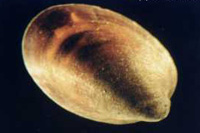 |
|
| Photo copyright Steven Moore. |
LINGCOD
|
Neither a cod nor a ling, a lingcod is an exceptionally good eating fish, a favorite of West Coast chefs, many of whom prefer it to halibut. Lingcod probably were named by European fishermen who thought the long, thin fish looked like their native ling and had the white flesh of a cod. |
 |
|
| Photo courtesy of PacSeafood.com. |
Found from Alaska to California, lingcod are actually members of the greenling family (Hexagrammidae), which includes sculpins and scorpionfish. In the kitchen, lingcod are a very versatile fish, with a beautiful white, flaky flesh. In the Pacific Northwest, lingcod is the favorite fish to fry in the best fish ’n chips restaurants.
LITTLE NECK CLAM and LITTLENECK CLAM
|
There are two species of clams called littlenecks:
Both of these hard-shell clams measure less than 2 inches across. They’re usually eaten on the half-shell. |
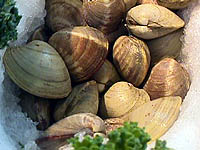 |
|
LOBSTER
|
Years ago, lobsters were considered a trash fish, and in the Northeast U.S., strict limits were placed on how many were allowed to be fed to workers. Today, those same trash fish command $18.00 a pound in restaurants. There are two major varieties: those with and those without claws. With claws, the most common is the U.S. is the Maine Lobster, also called the American lobster. In Europe, it is the European lobster. Both have 5 pairs of legs, one of which forms their distinctive claws. The European lobster is smaller. The second major variety is the clawless lobster, the suppliers of most lobster tails. They are known as Spiny or Rock lobsters. Live lobsters can be found year-round, and should be cooked live or quickly after death. Whole lobsters are best steamed, boiled or broiled. Whole cooked lobsters and precooked frozen and canned lobster meat are available, as well as frozen, raw Spiny lobster tails. Females yield coral (eggs) in the spring. Many consider the lobster’s tomalley (liver) a delicacy. The Chic or Chicken lobster, about a pound, is the smallest lobster allowed to be sold in the U.S. It takes an American lobster 4 to 7 years to grow to one pound. The “scream” heard when placed in boiling water is simply air escaping from the lobster’s body as it expands from the heat. See also spiny lobster. |
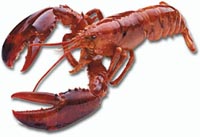 |
|
| American Lobster, also called Maine Lobster (Homarus americanus), has been a major resource throughout New England and Atlantic Canada since colonial times. Today, thanks to careful handling and sophisticated shipping techniques, American lobster is enjoyed from Boston to Beijing. American lobsters are found from North Carolina to Labrador, with Maine and Nova Scotia typically being the biggest producers. Photo courtesy of PacSeafood.com. |
Continue To Page 8: Seafood Terms Beginning With M
Go To The Alphabet Index Above
Lifestyle Direct, Inc. All rights reserved. Images are the copyright of their respective owners.
![]()
© Copyright 2005-2025 Lifestyle Direct, Inc. All rights reserved. All images are copyrighted to their respective owners.




